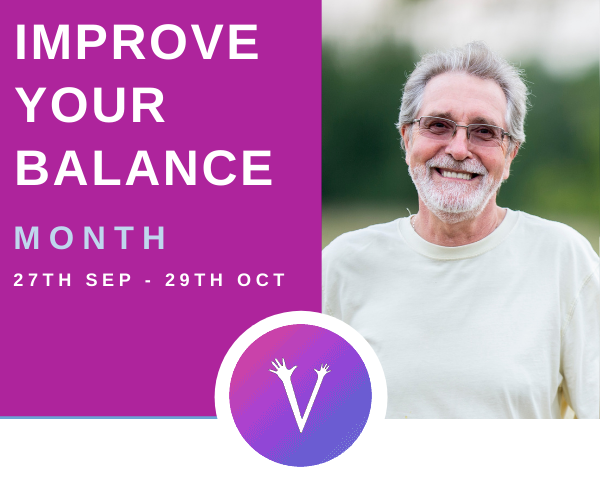How to improve your balance and reduce falls

As people are getting out and about again after long periods of inactivity, it seems there’s one problem troubling almost everyone – their balance has worsened and their confidence has gone too. The two seem to go hand in hand.
Falls, or sometimes the fear of falling, can have a huge impact on our ability to do everyday activities. This in itself can create a downward spiral as the less we do, the weaker our muscles become and our risk of falling can increase.
The good news is that many falls can be prevented and Balance Awareness Week (September 2021) is a great way to focus on all the things you can do to reduce your falls risk.
Falls are very common. Every minute, six people over 65 suffer a fall in the UK. But over a million falls could be prevented by doing the right type of exercises and finding out what you can do to help yourself stay strong and steady.
As well as weak muscles, there are lots of things that can contribute to having a fall such as poor vision, some medications, unsuitable footwear, poor lighting (especially at night), trip hazards such as wires, rugs and pets or slippery surfaces.
Not all falls cause injury, but unfortunately there are over 500,000 fragility fractures every year in the UK, that’s one every minute costing the NHS over £2 billion year.
Exercise is vitally important to reduce the risk of falling and having a fracture – we need to focus on strength, power, speed of reaction and balance.
Dancing, Tai chi, postural stability / strength and balance classes and yoga are all beneficial. Before you start any new exercise, or if you’ve already had a fall or not exercised for a long time, then please get individual advice from a medical professional or trained fitness professional first.
You may need to build up your strength before you can begin to try any balance exercises. Resistance bands are ideal for this as there are many exercises you can do seated to help you get stronger.
In order to improve your balance, you need to make sure you can participate safely. Have a sturdy surface or chair to hold on to for support at first, such as the kitchen worksurface or a steady table.
At first you can try heel raises holding on to the kitchen sink – take a look at our popular video:
As you gain confidence and the exercises starts to feel easy, then you can gradually progress to reducing the support. You can hold with one hand, then one finger, then intermittently touch the supporting surface until you feel ready to do without any support. Then gradually increase the time you can balance – you’ll be surprised at how quickly you can improve with practice.
There are many factors that affect your risk of falling so come along to the Move it or Lose it Club for our Better Balance month starting on Monday 27th September when you can find out how to test your balance. Throughout October we will have exercise sessions every day to help improve your strength, stamina, balance and confidence. There’s a talk and Q&A with Karen, our physiotherapist, who will also show you how to get up after a fall; and with Martha, our pharmacist, who can answer any questions you have about medications which may affect your balance. There’s cookery demos, nutrition tips for healthy bones and lots of other exercises to try such as hula dancing, Pilates, beginner’s ballet and more.